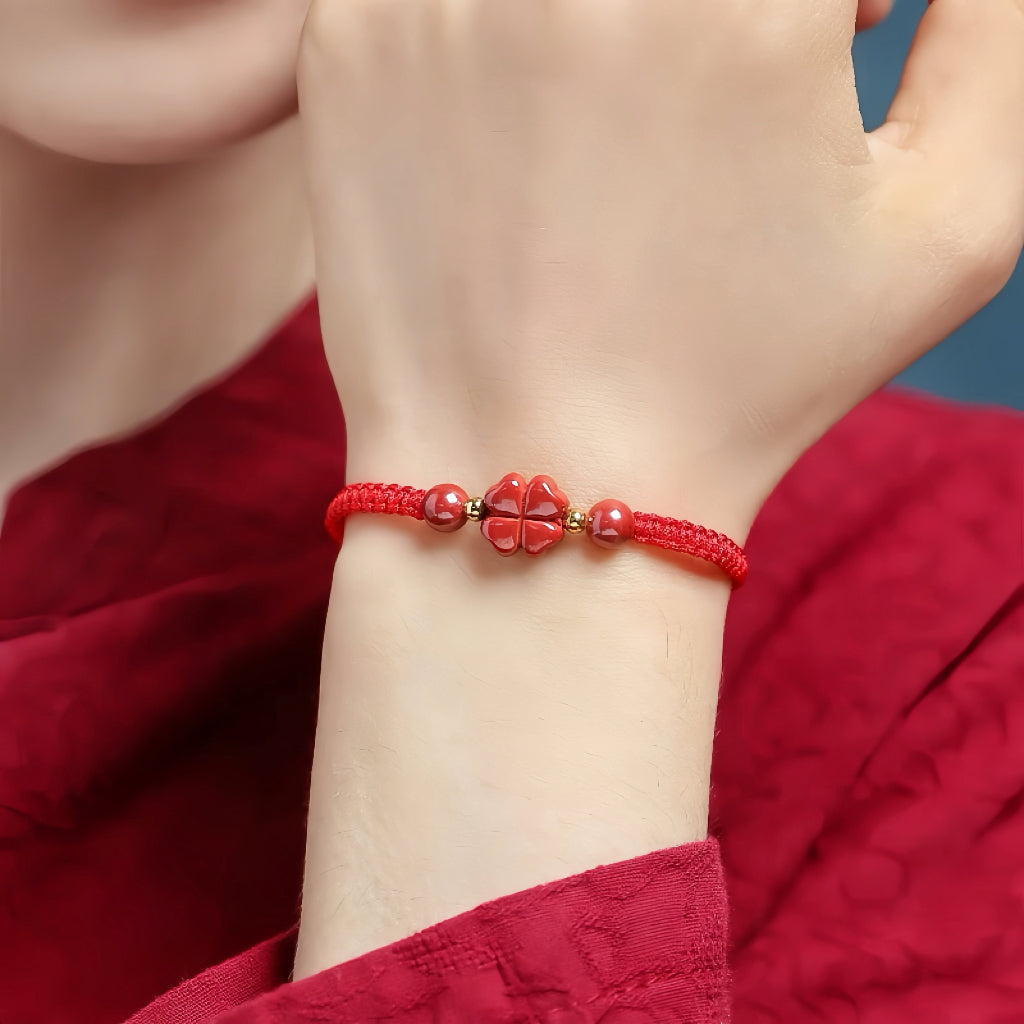The red string bracelet is more than a fashion accessory—it’s a symbol steeped in centuries of cultural and spiritual significance. Whether you wear it for protection, love, or good fortune, understanding where to place it is key to honoring its traditions and maximizing its symbolic power. In this guide, we’ll explore the cultural rules for wrist placement, practical styling tips, and answers to common questions.
The Cultural Significance of Red String Bracelet Placement
1. Kabbalah Tradition: Left Wrist for Receiving Energy
In Kabbalistic belief, the red string bracelet is worn on the left wrist—the side closest to the heart—to absorb positive energy and deflect the "evil eye". This placement aligns with the idea that the left side of the body is the "receiving" channel for spiritual forces. The string is traditionally tied with seven knots, each representing a spiritual seal of protection.
2. Buddhism and Hinduism: Right Wrist for Action and Blessings
In Buddhist and Hindu traditions, the right wrist is often preferred. Monks tie red strings on the right wrist during blessings to symbolize interconnectedness and active spiritual engagement. In Hinduism, the right hand is associated with giving and action, making it ideal for bracelets meant to manifest goals like prosperity or courage.
3. Chinese Folklore: Balance with Yin and Yang
Chinese traditions emphasize balancing yin (left) and yang (right) energies:
Men: Wear the bracelet on the left wrist (yang) to enhance strength and authority.
Women: Traditionally wear it on the right (yin) to attract harmony and love.
Unisex Rule: For general protection or luck, the left wrist is recommended to absorb positive chi.
4. Modern Fashion: Flexibility and Personalization
Today, many wearers prioritize aesthetics or personal meaning over strict traditions. For example:
Stack red string bracelets with metallic charms or gemstones on either wrist for a bohemian look.
Pair it with a watch on the non-dominant wrist for practicality.
Step-by-Step Guide to Wearing a Red String Bracelet
1. Choosing Your Intention
Align your placement with your goal:
|
Purpose |
Recommended Wrist |
Cultural Basis |
|
Protection |
Left |
Kabbalah, Chinese traditions |
|
Love/Relationships |
Right |
Chinese folklore, Hinduism |
|
Career Success |
Left (men), Right (women) |
Yin-yang balance |
2. Tying the Bracelet Correctly
Kabbalah Method: Have a loved one tie it on your left wrist while making a wish.
DIY Knotting: Use a sliding knot for adjustability, ensuring it’s snug but not restrictive
3. Pairing with Charms or Beads
Enhance its power with symbolic additions:
Evil Eye Charms: Deflect negativity (ideal for the left wrist).
Elephant or Hamsa Charms: Boost wisdom and protection.
Gemstones: Red agate for courage, jade for harmony.
4. Maintenance Tips
Avoid water exposure to prevent fading.
Cleanse periodically under moonlight or with sage to renew its energy.
Common Questions Answered
Q1: Can I Wear a Red String Bracelet on Both Wrists?
Yes! In modern practice, wearing two bracelets (one on each wrist) symbolizes balancing protection (left) and action (right).
Q2: What If My Bracelet Breaks?
In many cultures, a broken red string signifies it has absorbed negative energy. Thank it for its service, then burn or bury it respectfully.
Q3: Does Color Shade Matter?
Darker reds (e.g., crimson) are linked to strength and passion, while lighter shades (pink-red) symbolize tenderness.
Cultural Case Studies
1. The Kabbalah Bracelet in Pop Culture
Celebrities like Madonna popularized the left-wrist tradition, pairing red strings with luxury jewelry to merge spirituality and style.
2. Chinese Lunar New Year Customs
During festivals, red bracelets are worn on the left wrist to attract prosperity, often paired with gold charms for amplified luck.
3. Buddhist Prayer Rituals
Monks tie red strings on devotees’ right wrists after chanting mantras, infusing them with blessings for courage and clarity.
Conclusion: Honor Tradition, Embrace Personal Meaning
The red string bracelet’s placement is a bridge between ancient wisdom and modern individuality. Whether you follow Kabbalah’s left-wrist rule, embrace Chinese yin-yang balance, or create your style, let its vibrant hue remind you of resilience, connection, and hope. As you tie it on, set an intention—because this simple string carries the weight of countless stories and the promise of new beginnings.













